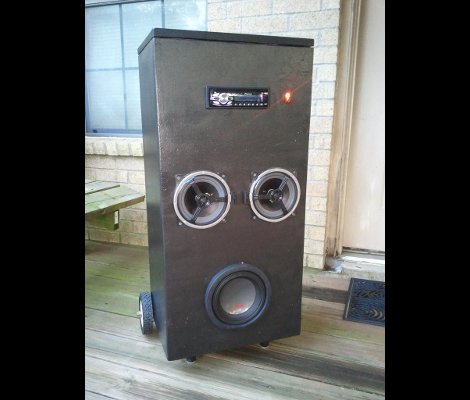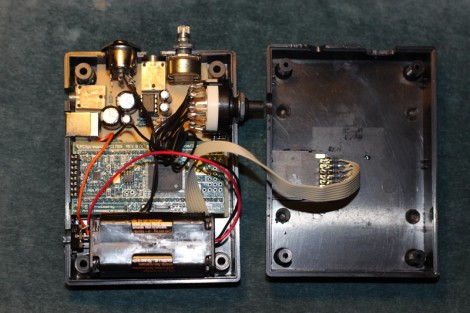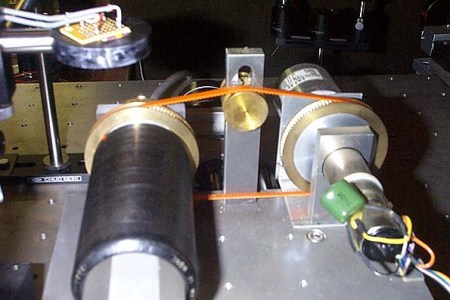
[Danman1453] is ready to face the rest of his summer thanks to this toolbox boombox he built for outside use. It’s always nice to have some tunes when laboring at those not-so-fun jobs (we’ve got some windows that need re-glazing and you can bet we’re not doing that in silence). But if you can’t really hear it what’s the point? The highest volume [Danman1453] could get out of the consumer options he tried just wasn’t cutting it, and that led him to this project.
The only thing he bought to complete the boombox was some black spray paint. He already had an old toolbox for the enclosure, a head unit and the larger speakers from an old car, and the small speakers came from a set of computer speakers. Those are cleverly mounted in the compartments on the lid of the toolbox, pointed down so that they’re oriented correctly when the lid is propped open. The faceplate was even recycled by using wood an old shipping pallet.
He would like a little bit of advice though. When he’s playing a CD and the bass really gets bumping the head unit tends to skip. Does anyone have an easy method of isolating it from the speakers while still keeping it safe and sound in the portable enclosure?
















